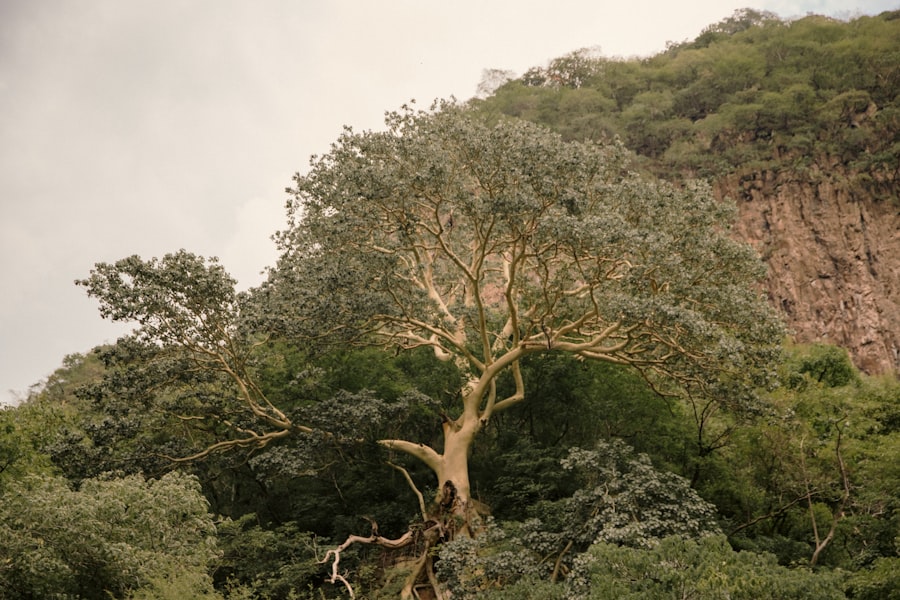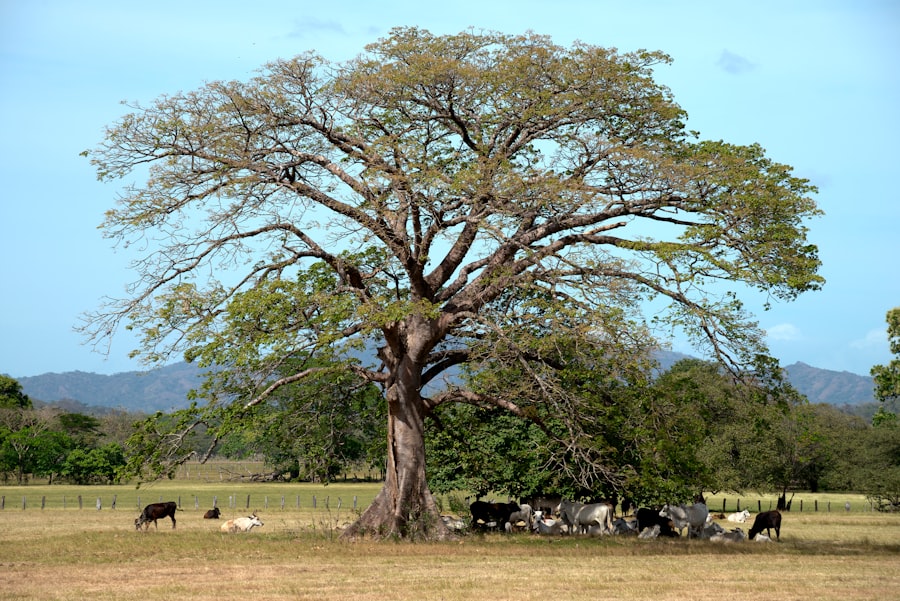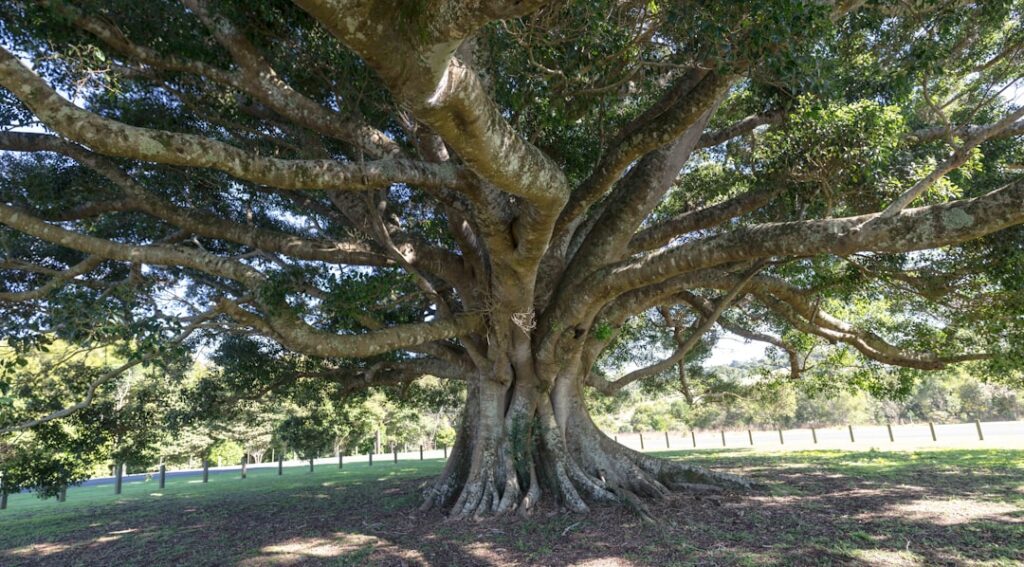“The Tree Where Man Was Born” is a profound exploration of the African landscape and its intricate relationship with humanity, penned by the esteemed author Peter Matthiessen. First published in 1972, this work is not merely a travelogue; it is a deep dive into the cultural, ecological, and spiritual dimensions of East Africa, particularly focusing on the region of Kenya and Tanzania. Matthiessen’s narrative is imbued with a sense of reverence for the natural world, as he intertwines his observations of wildlife and indigenous cultures with philosophical reflections on existence and the human condition.
The title itself evokes a sense of origin and belonging, suggesting that the land is not just a backdrop but a vital character in the story of humanity. Matthiessen’s journey through East Africa serves as both a personal pilgrimage and a broader commentary on the complexities of modernity encroaching upon ancient ways of life. The book is rich with vivid descriptions of the flora and fauna, as well as the diverse peoples who inhabit this vibrant landscape.
Through his keen observations, Matthiessen invites readers to consider the interconnectedness of all living beings and the impact of human actions on the environment. This work stands as a testament to the beauty and fragility of nature, urging readers to reflect on their own relationship with the world around them.
Key Takeaways
- “The Tree Where Man Was Born” is a classic work of nature writing by Peter Matthiessen, exploring the landscapes and cultures of East Africa.
- Peter Matthiessen was a prolific writer and environmentalist, known for his deep connection to nature and his exploration of spiritual and ecological themes.
- The book is set in East Africa, particularly in the Serengeti and the Ngorongoro Crater, and vividly captures the beauty and wildlife of the region.
- Themes of interconnectedness, the cycle of life and death, and the impact of human presence on the natural world are prominent in “The Tree Where Man Was Born.”
- The book has had a lasting impact on readers and environmentalists, inspiring a deeper appreciation for the natural world and the need for conservation efforts.
The Life and Work of Peter Matthiessen
Peter Matthiessen was an American novelist, naturalist, and environmental activist whose literary career spanned several decades. Born in 1927 in New York City, Matthiessen’s early life was marked by a love for nature and adventure, which would later inform much of his writing. He served in the U.
Navy during World War II before attending Yale University, where he developed his passion for literature and writing. His early works included fiction, but it was his non-fiction that garnered significant acclaim, particularly his explorations of nature and culture. Matthiessen’s commitment to environmental issues was evident throughout his life. He co-founded the Earthwatch Institute in 1971, an organization dedicated to supporting scientific research and conservation efforts worldwide. His writing often reflected his deep concern for ecological preservation, as seen in works like “The Snow Leopard” and “Wildlife in America.” In “The Tree Where Man Was Born,” Matthiessen combines his literary prowess with his passion for nature, creating a narrative that is both informative and evocative. His ability to weave personal experience with broader themes of ecology and spirituality has solidified his reputation as one of the foremost nature writers of the 20th century.
The Setting of The Tree Where Man Was Born

The setting of “The Tree Where Man Was Born” is as much a character in the narrative as Matthiessen himself. The book primarily takes place in East Africa, specifically in Kenya and Tanzania, regions renowned for their breathtaking landscapes and rich biodiversity. Matthiessen’s descriptions transport readers to the vast savannas, dense forests, and majestic mountains that define this part of the world.
The Serengeti National Park, with its sprawling plains teeming with wildlife, serves as a focal point for many of Matthiessen’s observations. In addition to the physical beauty of the landscape, Matthiessen delves into the cultural richness of the indigenous peoples who inhabit these regions. He encounters various tribes, including the Maasai and the Kikuyu, each with their unique traditions and ways of life that are intricately tied to the land.
Through these interactions, Matthiessen highlights the profound connection between people and their environment, illustrating how cultural practices are often shaped by ecological realities. The setting thus becomes a canvas upon which Matthiessen paints a vivid picture of life in East Africa, emphasizing both its splendor and its vulnerability.
Themes and Motifs in The Tree Where Man Was Born
“The Tree Where Man Was Born” is replete with themes that resonate deeply with readers, particularly those concerning nature, spirituality, and the human experience. One prominent theme is the interconnectedness of all living beings. Matthiessen emphasizes that humans are not separate from nature but rather an integral part of it.
This idea is illustrated through his observations of wildlife behavior and interactions among species, underscoring the delicate balance that sustains ecosystems. Another significant theme is the tension between modernity and tradition. As Matthiessen travels through East Africa, he witnesses the encroachment of Western influences on indigenous cultures.
This clash raises questions about identity, cultural preservation, and the consequences of globalization. Matthiessen’s reflections on this theme are poignant; he mourns the loss of traditional ways of life while also recognizing the inevitability of change. This duality creates a rich tapestry of thought that invites readers to ponder their own roles in shaping cultural narratives.
The Impact of The Tree Where Man Was Born
The impact of “The Tree Where Man Was Born” extends beyond its literary merit; it has influenced environmental discourse and cultural understanding regarding East Africa. Matthiessen’s vivid portrayals of wildlife and landscapes have inspired countless readers to appreciate the beauty of nature and advocate for its preservation. His work has contributed to a growing awareness of ecological issues, particularly in regions facing threats from development and climate change.
Moreover, Matthiessen’s exploration of indigenous cultures has fostered greater respect for traditional knowledge systems. By highlighting the wisdom embedded in these cultures, he encourages readers to consider alternative perspectives on conservation and sustainability. The book has been used in educational settings to discuss topics such as anthropology, ecology, and environmental ethics, making it a valuable resource for those seeking to understand the complexities of human-nature relationships.
Criticisms and Controversies Surrounding The Tree Where Man Was Born

Despite its acclaim, “The Tree Where Man Was Born” has not been without its criticisms. Some scholars argue that Matthiessen’s portrayal of indigenous cultures can be overly romanticized or simplistic. Critics contend that while he captures the beauty and spirituality of these cultures, he may inadvertently perpetuate stereotypes or overlook their complexities.
This critique raises important questions about representation in literature and the responsibilities of authors when depicting marginalized communities. Additionally, there are discussions surrounding Matthiessen’s perspective as an outsider observing these cultures. Some argue that his position as a Western author may limit his understanding of local contexts and nuances.
This critique invites readers to engage critically with the text, considering how cultural narratives are constructed and who gets to tell them. While Matthiessen’s intentions may be rooted in admiration and respect, it is essential to acknowledge the potential pitfalls inherent in cross-cultural representations.
The Legacy of The Tree Where Man Was Born
The legacy of “The Tree Where Man Was Born” is multifaceted, encompassing its contributions to literature, environmentalism, and cultural awareness. As one of Matthiessen’s seminal works, it has solidified his status as a leading voice in nature writing. The book continues to resonate with readers who seek to understand their place within the natural world and grapple with issues related to conservation and cultural identity.
Furthermore, Matthiessen’s work has inspired subsequent generations of writers and environmentalists to explore similar themes in their own narratives. His ability to blend personal experience with broader ecological concerns has paved the way for a genre that emphasizes storytelling as a means of fostering empathy for both nature and humanity. The enduring relevance of “The Tree Where Man Was Born” speaks to its power to provoke thought and inspire action in an ever-changing world.
Further Reading and Resources on The Tree Where Man Was Born
For those interested in delving deeper into “The Tree Where Man Was Born,” several resources can enhance understanding and appreciation of Matthiessen’s work. Biographies such as “Peter Matthiessen: A Biography” by Charles E.
Additionally, collections of essays like “The Best American Essays” often feature pieces that echo themes found in Matthiessen’s work. Readers may also explore other writings by Matthiessen that reflect similar concerns about nature and culture, such as “The Snow Leopard,” which chronicles his journey through Nepal while contemplating spirituality and conservation. For those interested in environmental activism inspired by literature, organizations like Earthwatch Institute offer opportunities for hands-on involvement in conservation efforts worldwide.
Academic journals focusing on environmental studies or anthropology may also contain critical analyses of Matthiessen’s work, providing diverse perspectives on its impact and significance. Engaging with these resources can deepen one’s understanding of “The Tree Where Man Was Born” while fostering a broader appreciation for literature that bridges the gap between humanity and nature.
Peter Matthiessen’s “The Tree Where Man Was Born” is a profound exploration of the African landscape and its intricate connection to human history and culture. For readers interested in further exploring themes of nature and humanity, an article that complements Matthiessen’s work can be found on Hellread. This article delves into similar themes of environmental and cultural interconnections, offering a contemporary perspective that resonates with Matthiessen’s timeless observations. You can read more about these themes in the article available at Hellread.
FAQs
What is The Tree Where Man Was Born by Peter Matthiessen about?
The Tree Where Man Was Born is a book by Peter Matthiessen that explores the wildlife, landscapes, and cultures of East Africa, particularly focusing on Tanzania and Kenya.
When was The Tree Where Man Was Born published?
The Tree Where Man Was Born was first published in 1972.
What is the significance of the title “The Tree Where Man Was Born”?
The title refers to the mythical tree of human origins, and reflects the book’s exploration of the origins of humanity and the interconnectedness of all life in East Africa.
What are some of the themes explored in The Tree Where Man Was Born?
The book explores themes such as the relationship between humans and the natural world, the impact of colonialism on East Africa, and the diversity of cultures and wildlife in the region.
Is The Tree Where Man Was Born a work of fiction or non-fiction?
The Tree Where Man Was Born is a work of non-fiction, specifically a travel memoir and natural history book.
What is the writing style of The Tree Where Man Was Born?
Peter Matthiessen’s writing style in The Tree Where Man Was Born is descriptive and immersive, drawing readers into the landscapes and cultures he encounters in East Africa.







